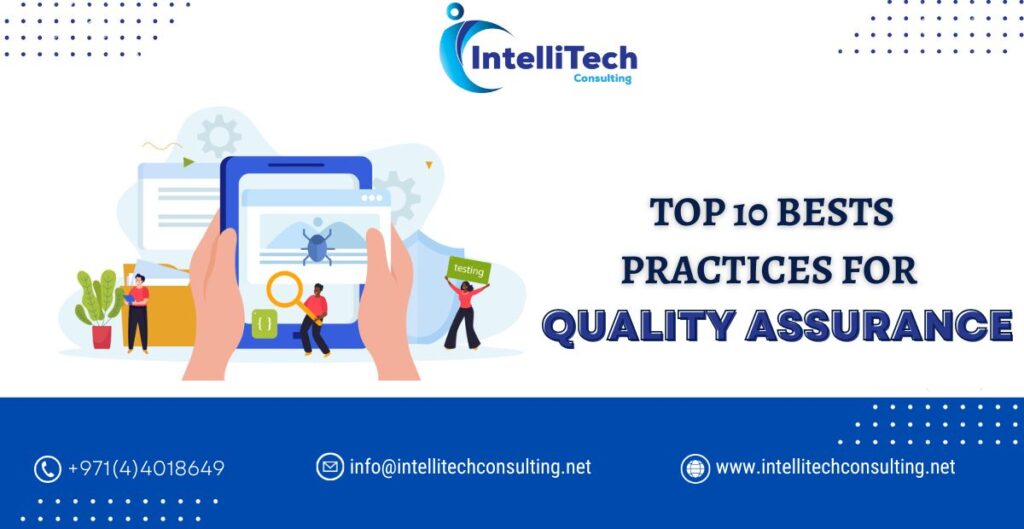

Top 10 Bests Practices for Quality Assurance
Software quality assurance encompasses a vast array of activities that stretch across the complete life cycle of software, application, or program development. It is very important to follow the best practices so that the testers can ensure top-notch quality.
As an integral part of the quality management system, software quality assurance services plays a crucial role in ensuring the quality of products and services throughout their entire life cycle. This may involve various activities including product testing, process validation, and system integration, among others. By implementing QA processes, companies can ensure that their software products and services meet or exceed customer expectations and comply with industry standards and regulations.
- Though there is a misconception that testing is synonymous with QA; in reality, Quality Assurance is a broader term. Risk management, along with other processes and activities, should be viewed as part of the process of ensuring the quality of your product. It is one of the foundational elements of adequate quality assurance.
- The concept of Software Quality Assurance should encompass the entirety of both the software development life cycle and the process of self-development.
- QA testing should focus on improving the software development process to optimize the end product’s quality. It provides assurance to senior management and stakeholders that the processes and activities used are designed to maintain high quality.
- It entails continuously monitoring the process and ensuring that the agreed-upon standards and procedures are followed throughout the development process.
- Software QA must also be objective, and the Quality Assurance team must be given some autonomy and authority in order for the process to function properly. The company’s reputation is also influenced in this way, positively if it can consistently deliver dependable and high-quality products.
- With an effective QA testing methodology, the overall cost of the software’s lifecycle can be reduced because QA testing ensures that software conforms to requirements and standards, which is a critical requirement in the development of life-critical products.
- Adequate QA reduces software maintenance costs and prevents costly errors from being discovered after release. Early error identification through QA procedures results in a reduction in the overall lifecycle cost.
- QA should cover the entire lifecycle of a product and be applied to every stage of delivery, production, or maintenance. QA is not just about testing at the end but creating a quality product from the start and continue testing it. This requires a transformation of the organizational culture to make QA a continuous effort and result in real process improvement.
- Quality Assurance follows two fundamental principles, namely “fit for purpose” and “right first time”, regardless of the product being developed. The Quality Assurance principles of “fit for purpose” and “right first time” require products to perform their intended functions and be error-free. These principles emphasize the need for reliable and consistent product performance over extended periods of time. Various techniques and methods can be utilized to achieve these two goals simultaneously.
- Defining and adhering to the correct processes during product development is crucial to ensure no deviation from the intended plan.
The best practices for the quality assurance testing process must include all the risk management and general testing methods along with other options as well. Intellitech always focuses to improve the quality of the software yet reducing the cost by continuous monitoring even after the release.



